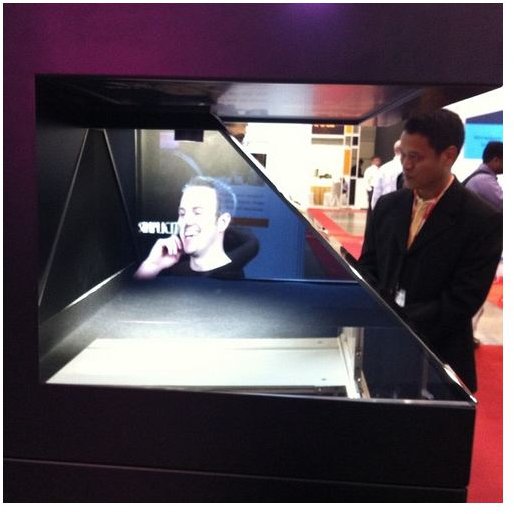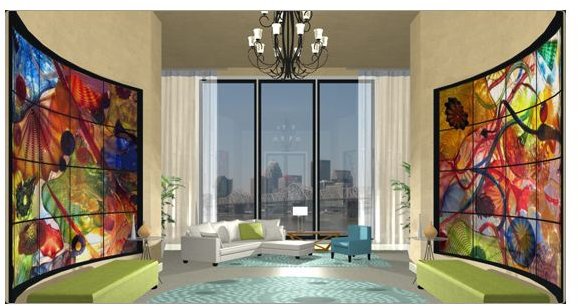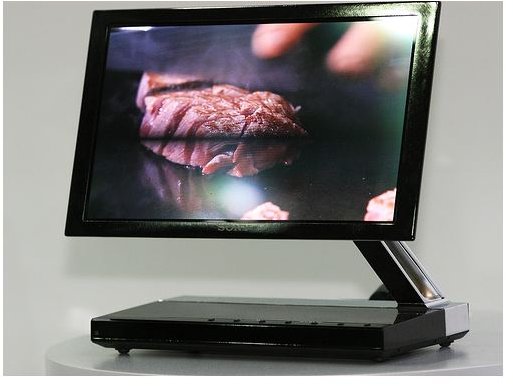What Will Tomorrow's TVs Look Like?
Just as LED and LCD TVs took the High Definition marketplace by storm there will be newcomers to vie for the crown of king of the HDTV. The major new competitor we are looking to hear from in the near future is the OLED. A bit further down the road we’ll be seeing 3D televisions that don’t require viewers to wear glasses, televisions that allow two people to watch different shows at the same time on one screen by varying the viewing angle and eventually the Holographic Television which will project a 3D image into the viewing area. While some of these seem like science fiction there are already working models of all of these technologies in various stages of development. By 2050, we may even have bezel free digital walls.
Television in the Near Future: 2011-2020
Imagine a television that is only .3 millimeters thick, that is the thickness of three pieces of paper stacked on top of each other with ultra-high definition capability (3840-by-2160-pixel resolution). This is the latest prototype displayed by the Sony Corporation. It is not available for sale yet but its previous incarnation, the 3 mm Sony XEL-1 OLED, sells for $2,500. While both models are only 11 inches, they are the first foray into OLED (Organic Light Emitting Diodes). OLED is the tech of the near future and will be the displays used on the next generation of high-end televisions.
OLED televisions are brighter, more efficient, thinner and have refresh rates and contrast than LED and LCD sets that are currently on the market. They take less power to operate than a traditional LED and the form factor could allow them to be flexible and transparent. There are currently two types of OLED under development. The first is a True-OLED that uses three colored sub-pixels (red, green and blue) to create a pixel while the other uses a white OLED covered with a transparent color film.
Several companies (LG, Panasonic, Samsung, Sony and Toshiba) have shown large OLED TV prototypes at CES there is little chance of seeing anything in the commercial market until mid-2013. LG expects the price of the unit to run about 50 percent higher than a comparable LCD.
While these OLED screens are micro-thin and can be flexible, do not expect to see this part of the technology to be exploited in televisions. It is more likely that this will be used in the tablet computer market sometime between 2020 and 2050.
Television in the Mid Future 2020-2050

What might we expect to see in our living rooms in the mid future? One of the strongest indications is that we will see Holographic Televisions nearer to 2030. There are already prototypes that can display static images and change them once every two to three minutes. Of course, for these units to be viable they will have to have the computing power to refresh hundreds of times per second. As the size of microprocessors shrinks and the speed increases, we come closer to this type of tech.
The Holographic Television will most likely look like coffee table and display a large rectangular 3D field of view that can be viewed from several angles simultaneously. While the televisions will be ready for market in the near future, television producers will need to employ new methods of filming to accommodate this new viewing style.
Also in the mid-future, we can expect to see large multipanel television displays making their way into homes. Currently these are seen in large retail establishments and ultra high-end homes. The Runco Company is at the forefront of multipanel television distribution and currently offers several “WindowWall” options to clients who can afford it. If you’ve been to an upscale sports bar, you have probably seen one of these multi panel displays. While the effect can be replicated by purchasing several small LCD or LED screens, the technology to coordinate the multiple displays is the expensive part and the quality of Runco screens far exceeds that of everyday commercial brands.
Another concept that we may see in television viewing is the dual view screen. Sharp Electronics has demonstrated an LCD TV that produces different images at different viewing angles. While this may not be practical for in home use, it could be beneficial for GPS navigation systems where the driver can see the navigation while the passenger watches a movie.
Television in the Far Future 2050-2100

The wall turned on with a faint blue glow. A soft voice calls out from the ether, “What would you like to watch this morning?” You answer, “The local weather please.” Instantly the blue glow changes to a live weather feed from the local television channel website with a view from local webcams. Along the bottom third of the wall the forecast scrolls from left to right.
This is the true extent of what OLED technology will be able to give us, a seamless wall of picture and sound akin to a primitive Star Trek Holodeck. OLEDs will eventually be produced without the need for bezels. When the bezels are eliminated, a multiple panel system can be placed on any surface without the seams that are currently seen in multi panel installs. In addition, the flexible nature of the OLED would allow cathedral ceilings and alcoves to have screens placed on them as well. These televisions will be everywhere and all be tied together by an in home computer system. You will be able to start watching a program in one room and have it follow you from room to room as you do your daily chores.
When you are thinking about what tomorrow’s TVs will look like, think about what someone in 1950 would have said about where we would be today. They probably would have sold us short. The TV’s of the future are going to be interactive, large, ultra high definition and paper-thin. They will be everywhere, attached to walls, ceilings, furniture, bathroom shower doors and any other surface you might consider. The world will be transformed into a digital playground with many of these televisions offering touch screen interaction, voice control and in the far future maybe even intuitive program selection.
References
-
Sony OLED image courtesy of Steve Liao at Flickr, http://www.flickr.com/photos/steveliao/2089119570/sizes/m/in/photostream/ Under Creative Commons License 2.0.
-
Holographic TV image courtesy of S Baker at Flickr http://www.flickr.com/photos/sarahbaker/5858696837/sizes/m/in/photostream/ Under Creative Commons License 2.0.
-
Popular Mechanics: Beyond Hi-Def: TV’s Flexible Future http://www.popularmechanics.com/technology/gadgets/news/3848957
-
OLED Info: OLED TV http://www.oled-info.com/oled-tv
-
Sony Insider: 3D Holographic TV’s Very Possible And Will Happen By 2020 http://www.sonyinsider.com/2008/10/06/3d-holographic-tvs-very-possible-and-will-happen-by-2020/
-
SlashGear: Sony OLED TV – its .3mm thick, that’s 10 times thinner than the XEL-1
http://www.slashgear.com/sony-oled-tv-its-3mm-thick-thats-10-times-thinner-than-the-xel-1-1611207/
-
Runco: WindowWall: http://www.runco.com/_webapp_2981053/Runco_WindowWall
-
WindowWall concept art used from Runco.com under the auspice of fair use.
